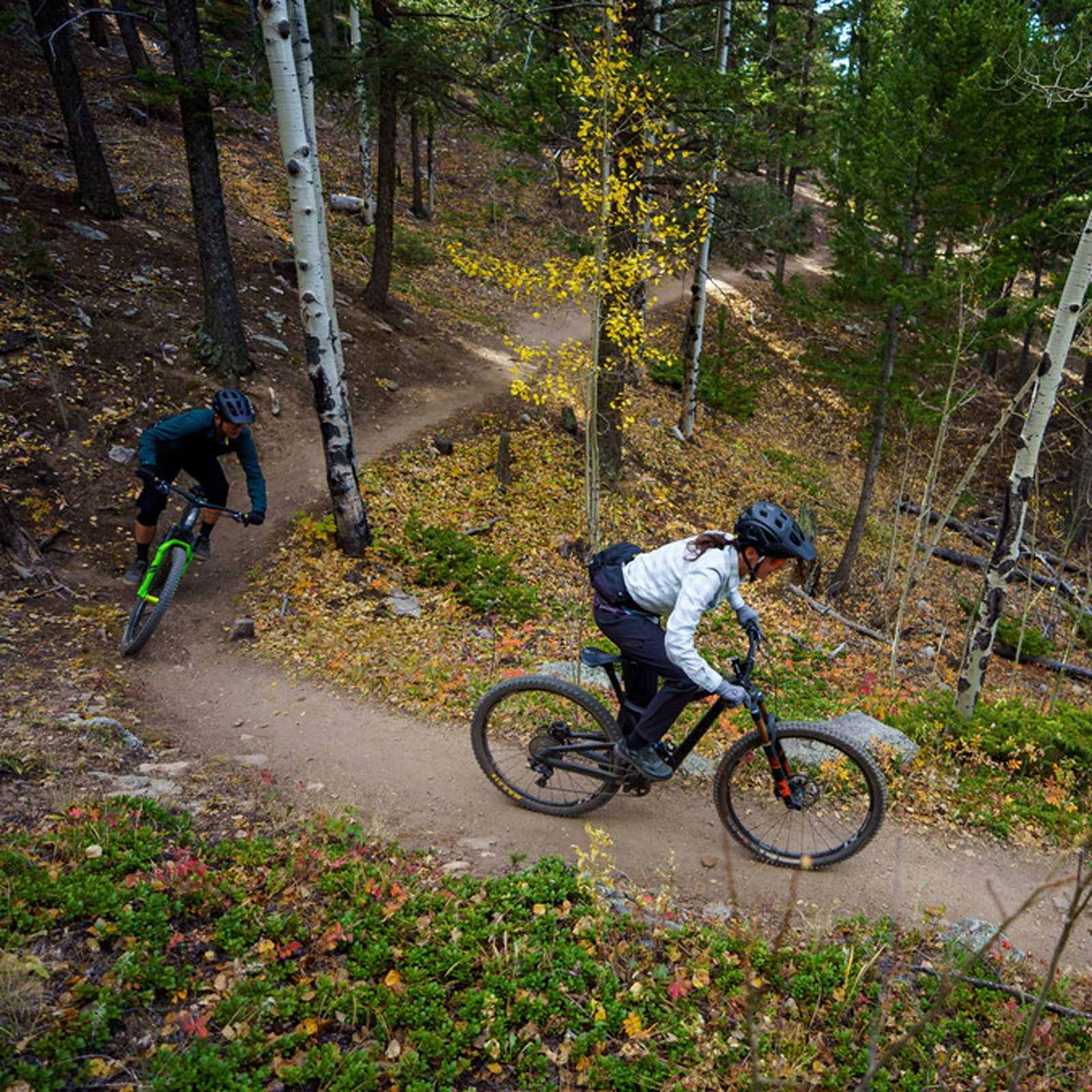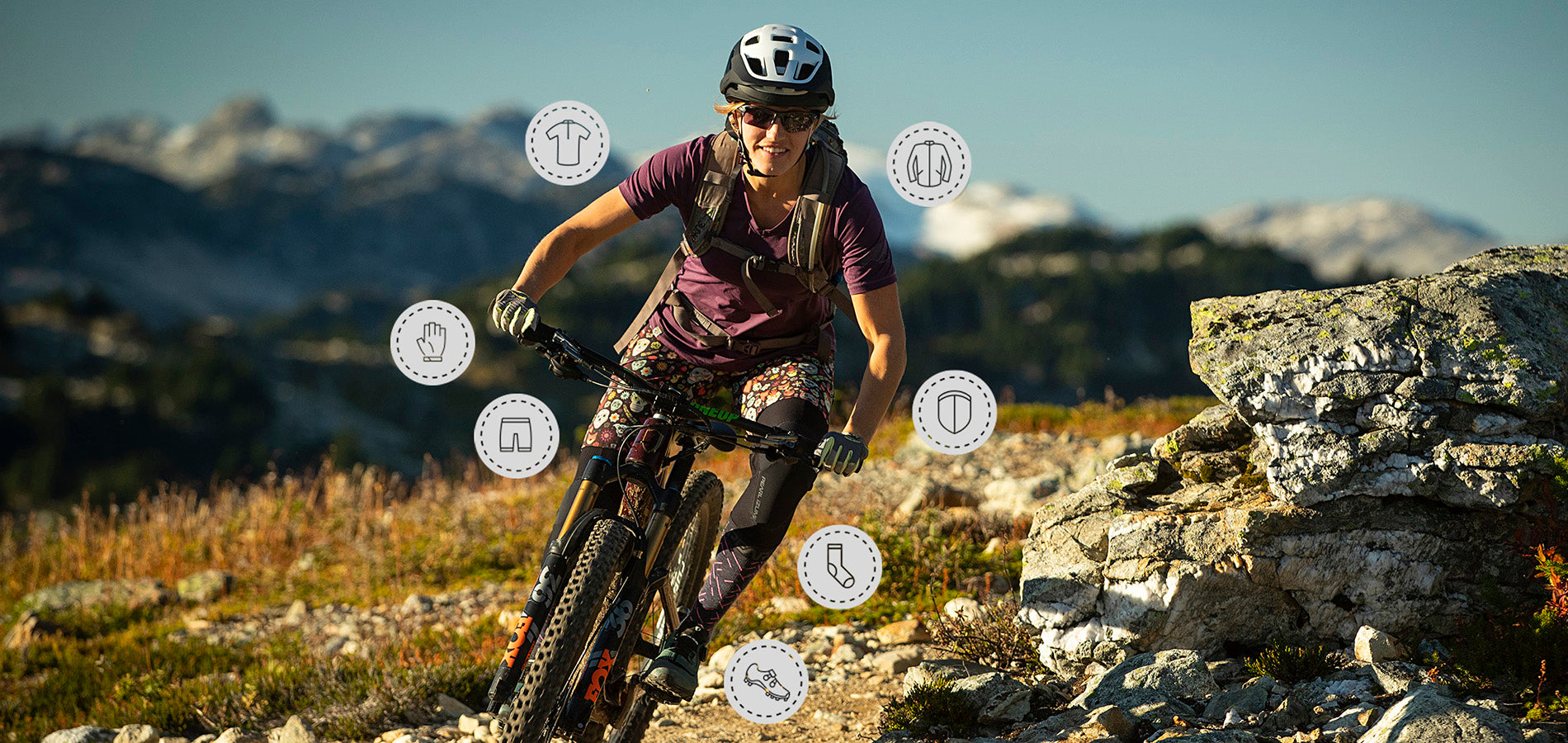Gear Up with Confidence: A Comprehensive Women’s Mountain Bike Buying Guide for Beginners
Imagine a trail stretching before you, a mosaic of earth and dapples of sunlight beckoning you into the wild. Mountain biking isn’t just a sport; for many women, it’s an empowering journey that begins with the perfect mountain bike. Navigating through uneven terrains and adrenaline-infused descents, mountain biking offers a unique blend of adventure, fitness, and freedom.
Selecting your first mountain bike can be as overwhelming as it is exciting, considering the variety of choices and technical specifications. Whether it’s the sturdy frame that complements your strength or the nimble suspension that echoes your agility, every component plays a pivotal role in your mountain biking experience. This guide endeavors to demystify the intricacies of women’s mountain bikes, ensuring a match made in trail heaven.

From the importance of a suspension fork tailored to female riders to the subtleties of gearing that can transform your ride, this buying guide serves as your compass. It’s complete with advice on essential gear tailored for women, and maintenance tips to keep your bike in peak condition. Prepare to embark on a journey to find your ultimate mountain bike companion.
MTB Womens Mountain Bike Buying Guide for Beginner
| Category | Suggestions |
|---|---|
| Frame Material | High-carbon steel, aluminum frame, carbon fiber |
| Frame Size | Measure inseam and subtract 2 cm for correct standover height |
| Suspension Fork | Tailored for female riders, lock-out suspension for comfort and control |
| Gearing System | Hardtail or full-suspension, incremental gear shifts for energy management |
| Braking System | Front disc brakes with rear linear pull brakes or hydraulic disc brakes |
| Helmet | Specifically designed for mountain biking, with ventilation and visor |
| Cycling Eyewear | Protects against debris, UV rays, and glare |
| Apparel | Ergonomically crafted shorts, moisture-wicking fabrics, compression fits, and strategic padding |
| Accessories | Bike computer, pump, spare tube, patch kit, first-aid kit, energy bars, and water |
| Maintenance Tips | Clean and lubricate bike regularly, check and adjust suspension, replace parts when necessary |
These suggestions are based on the information provided in the search results and aim to help beginners choose the right mountain bike for their needs.
Benefits of Mountain Biking for Women
Mountain biking offers a myriad of benefits tailored for the adventurous female rider. Women’s mountain bikes are designed specifically with female anatomy in mind, ensuring a comfortable ride across untamed trails. A significant perk is the custom-fit geometry that includes unique bends in the smaller frames, enhancing standover clearance and providing a form-hugging fit. By incorporating parts like shorter stems and narrower handlebars, these bikes offer superior control, allowing you to navigate through rugged terrains with greater ease and confidence. The tailored suspension fork found in these bikes is another boon, precisely tuned for lighter riders; it absorbs bumps and jolts, making your off-road journey smoother and less fatiguing.
Moreover, women’s mountain bikes include meticulously chosen components, such as grip diameters and specialized seat styles, all contributing to an ergonomically optimized experience. The result is an overall reduction in muscle strain and increased endurance during long treks. Fitted with multiple gears and reliable brakes, these bikes empower you to conquer steep hills and sudden descents safely. Whether it’s a hardtail mountain bike or an electric mountain bike, each model promises robust performance and thrill, transforming every ride into an empowering adventure.
| Bike Feature | Benefit for Female Riders |
|---|---|
| Tailored Frame Geometry | Improved Standover Clearance |
| Custom-fit Components | Enhanced Control & Comfort |
| Lighter Suspension Tuning | Smooth Ride on Rough Terrain |
| Narrower Handlebars | Better Maneuverability |
| Multiple Gears & Brakes | Safety & Enjoyment on Various Trails |
How to Choose the Right Women’s Mountain Bike
Choosing the right mountain bike is a decision that can greatly enhance your riding experience, especially for female riders who may have specific anatomical concerns. Women’s mountain bikes are not just about appealing colors or designs; they’re about smart engineering to match a woman’s physique, leading to a more comfortable and controlled ride. Here’s how to pinpoint the perfect ride for you:
Understanding Different Bike Types
When shopping for a women’s mountain bike, be aware of the design differences that cater to a typically shorter female stature. Manufacturers often modify stack heights, handlebar positioning, and frame geometry to ensure a good fit. Here’s a quick guide on the different types of mountain bikes and what to look for:
- Hardtail Mountain Bike: It has a suspension fork at the front but no rear suspension, good for cross-country riding and hill climbing.
- Full-Suspension Mountain Bike: These come with both front and rear suspension, absorbing more shock, which provides more comfort on technical trails.
- Electric Mountain Bike: It’s equipped with a battery-powered assist, which is great for riders looking to tackle more challenging terrain without overexerting themselves.
Choosing between these types depends on the type of terrain you plan to ride on and your personal preference for comfort and challenge.
Selecting the Right Frame Material
Your mountain bike’s frame material is crucial as it impacts the comfort, durability, and weight of the bike. Here are the most common options:
- High-Carbon Steel: This material offers supreme durability, which is ideal for those frequenting rugged terrains.
- Aluminum Frame: A popular choice, providing a good balance between weight and strength. Perfect for both recreational and serious trail riding.
- Carbon Fiber: High-performance bikes often use this material. It’s prized for its lightweight and stiffness, translating into better efficiency when riding.
When selecting a women’s mountain bike, consider where and how often you’ll be riding to determine the best material for you.
Considerations for Comfortable Riding Position
A correct fit is paramount for any mountain biker, but especially for women, who might encounter discomfort with non-tailored bikes. Here’s how to ensure a comfortable ride:
- Measure the inseam of your leg with shoes on and subtract 2 centimeters. This will give you an idea of the correct frame size for comfortable standover height.
- Look for designs that have shorter stack heights and lower handlebars to suit a shorter torso and arms.
- Consider accessories like mountain bike shorts and special socks to enhance comfort and protection during your rides.
Remember, the right bike will allow you to ride longer and more frequently without discomfort, making your mountain biking journey full of excitement and joy.

Features to Look for in a Women’s Mountain Bike
When it comes to choosing a women’s mountain bike, the suspension fork is a significant feature—one that can drastically affect comfort and performance. Lock-out suspension forks are a valuable feature, allowing you to adapt to smoother terrain efficiently by disabling the suspension, saving you energy and increasing your speed. For instance, the Cannondale Trail Women’s 6 boasts a SR Suntour XCT suspension fork, adept at handling shock absorption on the front wheel and offering a smoother ride on bumpy trails.
Hardtail mountain bikes, with their front-only suspension, offer a blend of trail responsiveness and improved traction, making them versatile for a variety of terrains, from dirt paths to rocky inclines. On the other hand, models with dual suspension, featuring both front and rear shock absorption, are the pinnacle of comfort and control, particularly beneficial when navigating more demanding, uneven landscapes.
Manufacturers also tailor suspension systems for women’s mountain bikes by calibrating the suspension tuning to suit lighter riders. This tailored approach ensures that the bike responds correctly to the rider’s weight, resulting in a more enjoyable and effective cycling experience across varied terrains.
Gear Options for a Smooth Ride
The gearing system on a mountain bike serves as its transmission, navigating the highs and lows of varied landscapes with ease. Women’s mountain bikes may come in hardtail versions, like the reliable and straightforward Cannondale Trail Women’s 6, or full-suspension designs such as the graceful Cannondale Habit Carbon 2 and the adept Scalpel Carbon Women’s SE. These full-suspension models are engineered for seamless travel across changing terrains, offering superior shock absorption.
Riders benefit from incremental gear shifts that aid in managing energy expenditure—shifters that handle slight variations in terrain via the rear or tackle more significant gradient shifts with the front. Such functionality is essential for maintaining cadence during transitions from flat stretches to steep climbs.
In terms of design, modern women’s mountain bikes prioritize features like a lower standover height and compact overall sizing, facilitating accessibility for all genders. These bicycles serve a broad spectrum of riders and stand out in both performance and aesthetics, with an expanded range of sizes and colors.
Brake Systems for Safety
No mountain biking venture should compromise on safety; hence, a robust braking system is essential. Women’s mountain bikes are often fitted with front disc brakes coupled with rear linear pull brakes, striking a balance between power and control. Some models come equipped with high-quality braking systems like Clarks Hydraulic Disc Brakes, known for their dependable stopping force, apt for the unpredictability of mountainous terrains.
Many women-specific bikes integrate a 21-speed drivetrain matched with dual disc brakes, enhancing the capacity to halt effectively, regardless of the surface conditions. Disc brakes notably outperform rim brakes, especially in wet weather, providing greater assurance with each descent.
Women’s mountain bikes offer a range of brake systems, from hydraulic to mechanical disc brakes. These not only grant reliable stopping power but are also integral to rider safety, enabling consistent braking response in demanding, off-road conditions. The peace of mind from knowing your brakes can handle the rigors of the trail is invaluable, and ensuring they are well maintained is just as crucial for the longevity of both the bike and the rider’s experience.

Essential Gear for the Female Mountain Biker
Mountain biking is more than just about having a great bike—it’s also about the gear you use to enhance and protect your ride. For female mountain bikers, it is essential to start with a bike that accommodates their specific body frames. Women’s mountain bikes are often designed with shorter stack heights and lower handlebars allowing for a better fit, which translates into better control and confidence on the trails. Key features to look for include a robust suspension system for a more comfortable ride across rough terrain, multiple gears for tackling hills, and high-quality brakes for safe and efficient riding.
The selection of women’s mountain bikes has grown to include models that cater to different styles and needs, from hardtail mountain bikes for a solid all-around riding experience to full-suspension options delivering ultimate comfort on more rugged trails. With variations like the Aluminum Frame 18-Speed Women’s Mountain Bike or the Electric Mountain Bike, female riders can choose bikes that align perfectly with their riding goals and terrain preferences.
Importance of a Well-Fitted Helmet
Safety is non-negotiable when it comes to mountain biking. Helmets designed specifically for mountain biking not only provide essential head protection but are tailored to offer superior comfort during rides. These helmets are built to vent well even at slower speeds, ensuring the rider stays cool and dry. The visors included on many of these helmets keep the glare of the sun at bay and protect against mud splashes and low-hanging branches encountered on the trail.
Moreover, these helmets are constructed to meet rigorous safety standards, providing peace of mind to riders as they navigate rocky paths and challenging descents. Pairing your helmet with cycling eyewear adds another layer of protection, safeguarding your eyes from flying debris, harmful UV rays, and glare. The right eyewear can also improve your vision on the trail, with certain lens tints such as orange or brown enhancing contrasts and helping you spot variations in the terrain.
Choosing the Right Mountain Bike Apparel
Wearing the right apparel can remarkably enhance the mountain biking experience. Women’s mountain bike apparel is made to offer the perfect balance of protection, comfort, and durability. It should make maneuvering easy while being resilient enough to withstand the inevitable brush with nature. Ergonomically crafted shorts, for example, are pivotal for maintaining comfort and facilitating sudden position changes, especially when shifting off the back of the saddle on steep drops.
Women’s mountain bike apparel is designed with the specific needs of female riders in mind. Brands like PEARL iZUMi are leading the way with innovative approaches to women’s biking wear—whether it’s the materials used or the cut of the clothing—to ensure that you get the most out of your ride both in terms of performance and enjoyment. Functionalities such as moisture-wicking fabrics, compression fits, and strategic padding all play a role in delivering a riding experience that is second to none.
Bike Computer and Other Useful Accessories
While the bike itself is the centerpiece of your gear, other accessories can significantly add to your riding experience. A bike computer, for example, is a valuable tool for tracking your speed, distance, and ride time. It can also help navigate routes and monitor your performance improvements over time.
Should you face mechanical issues, being prepared with a pump, spare tube, patch kit, and tire levers is crucial. These, alongside a small first-aid kit for treating minor injuries, should be packed for every ride. For those longer adventures, a map can keep you oriented, and written instructions on fixing flats can save time and stress. Lastly, don’t forget to pack extra food—like energy bars or fruit—and plenty of water to stay hydrated and energized. These small additions will ensure that you’re fully prepared for all the possibilities the trails may present.
Summary of essential gear recommendations for women’s mountain biking
- Helmet: Choose a helmet designed specifically for mountain biking to ensure head protection and comfort. Look for helmets with good ventilation, visors, and meeting safety standards12.
- Cycling Eyewear: Invest in cycling eyewear to protect your eyes from debris, UV rays, and glare. Opt for lenses that enhance contrast and improve vision on the trail2.
- Apparel: Select ergonomically crafted shorts, moisture-wicking fabrics, compression fits, and strategic padding for comfort and maneuverability during rides. Brands like PEARL iZUMi offer innovative women’s biking wear2.
- Accessories: Consider essential accessories like a bike computer for tracking speed and distance, a pump, spare tube, patch kit, first-aid kit, map, energy bars, water, and tools for mechanical issues2.
- Maintenance Tips: Regularly clean and lubricate your bike to maintain optimal performance. Pay attention to frame size, suspension tuning, wheel maintenance, and part replacements when needed. Proper maintenance ensures a smooth and responsive ride every time2.
These gear recommendations are tailored to enhance the comfort, safety, and performance of female riders during mountain biking adventures.

Maintenance Tips for Women’s Mountain Bikes
Maintaining a women’s mountain bike so that it performs at its best requires a keen understanding of its unique features and needs. Given the often lighter weight of female riders compared to males, women’s mountain bikes are designed with specific tuning, particularly in the suspension system. The customized setup demands regular personalized checks and adjustments to ensure your ride is smooth and responsive every time you hit the trail.
When inspecting your bike, pay close attention to the frame size, stem lengths, handlebar widths, grip diameters, and seat style to confirm that each part is in optimal working order and providing you with the comfort tailored to your proportions. Women’s mountain bikes typically come equipped with larger 27.5-inch or 29-inch wheels which deliver a smoother roll over rough terrain; however, these wheels also necessitate careful inspection to keep them true and stable.
It’s crucial to remember that the ergonomic differences found in women’s models, such as lower handlebars and shorter stack heights, mean that maintenance should always keep the rider’s ergonomic fit in mind, ensuring every component is properly adjusted for maximum control and efficiency.
Keeping Your Bike Clean and Lubricated
To extend the life of your mountain bike and keep it running like new, a regimen of cleaning and lubrication is essential. Dirt and debris can cause components to wear out prematurely, and improper lubrication can lead to increased friction and even more dirt accumulation.
Start by giving your bike a thorough clean after rides on muddy or dusty trails. Use a gentle detergent and soft brush to clear away any grime from the frame, components, and wheels. Be careful around seals and bearings to ensure no water or soap enters these sensitive areas.
Lubrication is just as crucial. Apply a quality bike lubricant to the chain, but be careful not to overdo it—a light coating will do the job. Remember to lubricate other moving parts like the pivot points on your bike’s derailleurs and the cable ends to avoid rust and ensure smooth operation.
Checking and Adjusting Suspension
One of the standout features of women’s mountain bikes is the specialized tuning of the suspension to better align with the typical lighter weight of female riders. To keep your ride comfortable and efficient, you must regularly check and adjust the suspension. For hardtail models, which feature only front suspension, make sure that the forks are set to the appropriate level of firmness for your weight and riding style.
For those with full-suspension bikes, both the front and rear shocks should be inspected. Incorrect suspension settings can lead to poor handling on the trail, so take the time to adjust your suspension according to the manufacturer’s guidelines, or consult with a bike specialist to get the perfect settings for your individual needs.
Understanding When to Replace Parts
Knowing when to replace parts on your bike is crucial for maintaining its performance and your safety. Keep an eye on the frame and moving parts for signs of stress, such as cracks, dents, or excessive wear. The wear rate can be influenced by your riding frequency, style, and conditions.
Components like brake pads, tires, and the chain can show visible signs of wear that signal the need for replacement. If you notice a decrease in your bike’s performance, like slipping gears or lack of responsiveness in the brakes, it could be time to replace these essential parts.
Regular check-ups should include looking for loose bolts, which can be an indicator that parts are out of alignment or need replacing. And remember, as your bike’s performance demands increase, you may want to consider upgrading certain components such as swapping to a higher-quality suspension fork for a smoother ride with better control.
By strictly adhering to these maintenance practices, you ensure that every time you head out on your trusty steed, it’s as ready for the adventure as you are.


